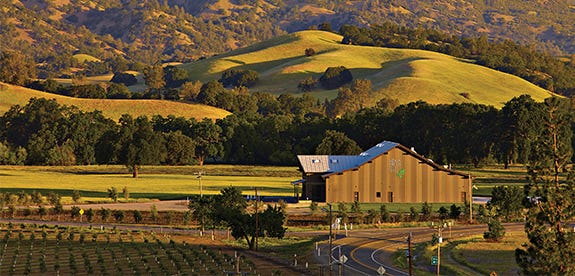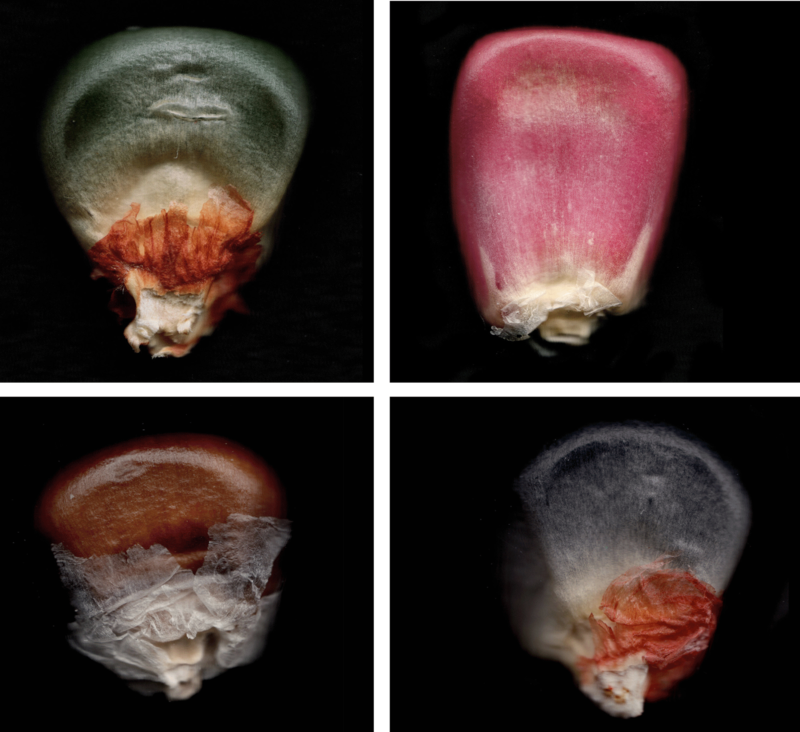🦃Producing A More Regenerative Thanksgiving
In the spirit of giving thanks, I’d like to thank the team at Soilworks for supporting me in writing this fun newsletter, thank farmworkers, and thank all those working to build a more equitable, resilient, and regenerative food system. Of course, thanks for giving me your eyes and time, dear reader!
Last year, we wrote about the importance of indigenous wisdom and heritage in establishing regenerative agriculture as we understand it today. This Native American Heritage Day, we would like to start out by featuring a few Native American food brands and resources, particularly ones that emphasize land stewardship, before continuing into analyzing the rise of a regenerative Thanksgiving plate:
For starters, The Intertribal Agricultural Council (IAC) has a “Made/Produced by American Indians” trademark to identify products made from federally recognized Tribes and Alaskan Native Villages - and protect consumers from misleadingly advertised Indigenous products. You can peruse their producer directory here. Additionally, I found this more informal list from The Toasted Sister Podcast to be a useful, regionalized list to find a variety of products.
DX Beef, which sources animals from DX Ranch on the Cheyenne River Sioux Indian reservation, is a grass-fed beef direct to consumer brand. The indigenous female owner, Kelsey Ducheneaux, is an incredible land steward and Director of Programs at the Intertribal Agricultural Council. Read her feature on Farmer’s Footprint here.
Bow & Arrow Brand provides non-GMO cornmeal from the Sleeping Ute Mountain on the Ute Mountain Ute reservation since 1962. The Ute people have been growing heirloom varieties of corn for millennia and Bow & Arrow sells blue, white, and yellow cornmeal for home cooking or commercial uses.
The Yocha Dehe Wintun Nation in Northern California’s Capay Valley grows olives and presses their own oils. The tribe produces high-end wine, honey, and other specialty food products through their Seka Hills brand. In particular, I found the Tribe’s focus on sustainability, water conservation, and transition to organic (currently on 250 acres of certified organic fields) compelling. They also run 700 head of cattle on a sustainable grazing program on 12,000 acres.
Bison herding, and stewarding is a form of animal agriculture exemplarized by Indigenous ranchers, as we have previously discussed. The Tanka Bar combines prairie-fed bison and sweet-tart cranberries into bars and snacks from the Pine Ridge Reservation in South Dakota. Though Tanka currently is not 100% grass-fed (they’re open about using 75% grass-fed), Tanka’s parent company Native American Natural Foods has exciting collaborations on the horizon and its nonprofit wing, the Tanka Fund, provides funding and technical assistance to aspiring ranchers transitioning to regenerative. I’ll also note that I could not find any indigenous-owned 100% grass-fed bison brands.
Discourse: This Thanksgiving, I heard a lot about how to have a more environmentally friendly celebration. Even the Federal Reserve Bank of St. Louis opined on twitter, saying that it’s more protein-efficient and cheaper to consume “tofurkey” instead of the traditional turkey. Advocates promoting plant-based alternatives pursue the same line of reasoning, but rather in regards to the carbon footprint of a Thanksgiving supper. See the analysis from Brightly below or this article from Time Magazine. Some issues, like the extensive food waste (over $293 million worth!) and critiques of industrial turkey production merit consensus.
However, turkey is consumed at over 80% of Thanksgiving tables and approximately 46 million turkeys are eaten each year (~4.5M will be plant-based). It is not going anywhere. This year was particularly interesting because the “regenerative turkey” attracted widespread attention. While Bloomberg wrote an article on the need for slower-growing poultry breeds, Morning Brew devoted a story to Cream Co.’s $99 regenerative turkey (the average consumer bird is ~$24, up 24% year-on-year). Though building out the regenerative turkey supply chain is quite arduous and will take time to scale to reach a compelling price point, the rise of regenerative poultry as a whole presents an interesting option to climate-conscious consumers. Regenerative poultry promises to sequester carbon, increase biodiversity, and overall create more ecologically healthy environments. In an (unscientific) taste test over at Bon Appetit magazine, slower-growing breeds of turkey were considered tastier as well. Greenbiz did an excellent deep-dive into regenerative turkey production as well as the “heritage” bird market. As the articles hone in on, the rub lies in how much more consumers are willing to pay for a regenerative turkey versus a conventionally grown one. This will be helped by the increases in the price of industrial meat, but ultimately a robust supply chain will be needed.
I was quite surprised to see the number of pasture-raised turkey options already available over the past week. The legendary White Oaks Pastures’ turkeys are a great option, integrating seamlessly into the multi-species adaptive multi-paddock system they pioneer. After all, much like other poultry, “turkeys themselves are pretty efficient in getting them grown.” Regeneration International provides a map of regenerative farms and filtering by turkey-producing ranches provides dozens of ranches. Diestel Turkey appears to be the leader in the space, as it produces ~0.5% of all turkey products in the country (per their own estimation). The seasonality of turkey consumption provides an interesting conundrum to regenerative producers, as pasture-raised turkey takes longer to grow to weight. Nevertheless, I found the usage of turkeys in multi-species systems as a useful value-add with low barriers to addition. Time will tell what consumers truly prefer, but regenerative turkeys are an increasingly available option to both conventional types of meat and plant-based alternatives. Consider it in your future Thanksgiving plates!
Read/Listen/Watch: This week, I re-read a great piece by Robin Wall Kimmerer on Corn/Maize. Wall Kimmerer connects native traditions around corn with our modern, technology-mediated understandings of the crop. While corn has an outsized importance in our industrial agricultural system, it also has a unique history as a “Bringer of Life” as a “monstrous grass” with C4 photosynthesis. I highly recommend listening to Professor Wall Kimmerer read the story and looking through the beautiful images. Understanding the different historical and modern uses for corn, as well as how it has innovated over millennia merits a meditation. If you do like this article, I also recommend immersing yourself in this “potato travelogue” of papas nativas in the Andes!
Disclaimer: The Regeneration Weekly receives no compensation or kickbacks for brand features - we are simply showcasing great new regenerative products.
If you have any products you would like to see featured, please respond to this newsletter or send an email to Kevin(at)soilworksnaturalcapital.com
The Regeneration is brought to you by Wholesome Meats | Soilworks | Grassroots Carbon| Grazing Lands











